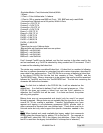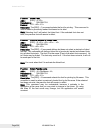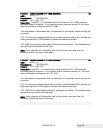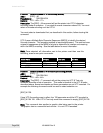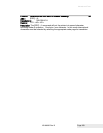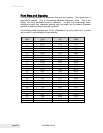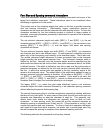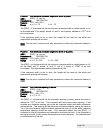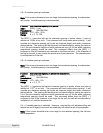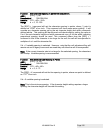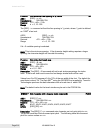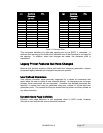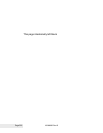
Unicode and Fonts
100-88002 Rev B Page 213
Function Set minimum character height and width in points. All
ASCII [ESC] + P <w><h>
Hexadecimal 1BH 2BH 50H
Decimal <27> <43> <80>
Range w = 0, 4 – 72 h = 4 - 72
The [ESC] + P command will set the minimum character width or height based on “w”
for the width and “h” for height, where “w” and “h” are in points, defined as 1/72
nd
of an
inch increments.
If the character width is set to zero, the height will be used for the width and
proportional spacing will be used.
Note: The set pitch command will take precedence unless this command selects 0
width.
Function Set minimum character height and width in ¼ points. All
ASCII [ESC] + p <w><h>
Hexadecimal 1BH 2BH 70H
Decimal <27> <43> <112>
Range w = 0, 16 – 255 h = 16 - 255
The [ESC] + p command will set the minimum character width or height based on “w”
for the width and “h” where “w” and “h” are in ¼ points or 1/288
th
of an inch
increments. This approximates setting characters by dot.
If the character width is set to zero, the height will be used for the width and
proportional spacing will be used.
Note: The set pitch command will take precedence unless this command selects 0
width.
Function Set Character spacing in points. All
ASCII [ESC] + I <d>
Hexadecimal 1BH 2BH 49H
Decimal <27> <43> <73>
Range d = 0, 4 – 72
The [ESC] + I command will set the character spacing in points, where one point is
defined as 1/72
nd
of an inch. This command will force mono-space printing. It will
override any character spacing set by the set character height and width commands
defined above. This spacing will be enforced until deactivated by setting the value to
0 or if the set character height and width commands use a 0 for the width indicating
proportional spacing should be used. This command differs from the [ESC] + J
command in that all characters are centered on the fixed cell size. It the character is
too big for the cell, it may overlap the previous and next character. The character size
is not adjusted to fit the cell.



